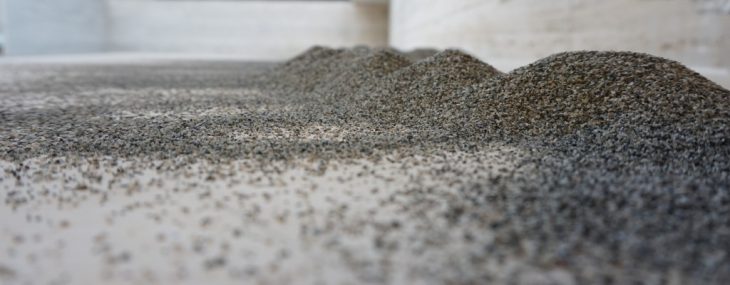
Generative Systems
Programming the Perpetual Unknowns
How can a self-sufficient society adapt to an ever changing topography?
Studio Objective:
- Mechanic Protocols, was a research studio at IAAC in the MAA01 program. The studio began with a single 120cm x 120xm plywood board and a liter of sand. At first the objective was to create a perpetual machine that could disburse sand and from there the objective evolved into the creation of an architectural scenario.
Sand Disbursement:
- The disbursement of the sand began by studying the impact of a wooden ball hitting the sand with a force. Through the use of a radial grid, created on the plywood board, we were able to measure and test for the best disbursement pattern. There were many test; throwing a ball with the hand, using a sling shot, creating an automated baseball bat swing device, etc. The final design was a ball shooting device used as a simulator for the architectural Protocol. Using load cells, weight sensors, the machine is able to read the weight of the sand and direct itself to aim at the area the weighs the most.
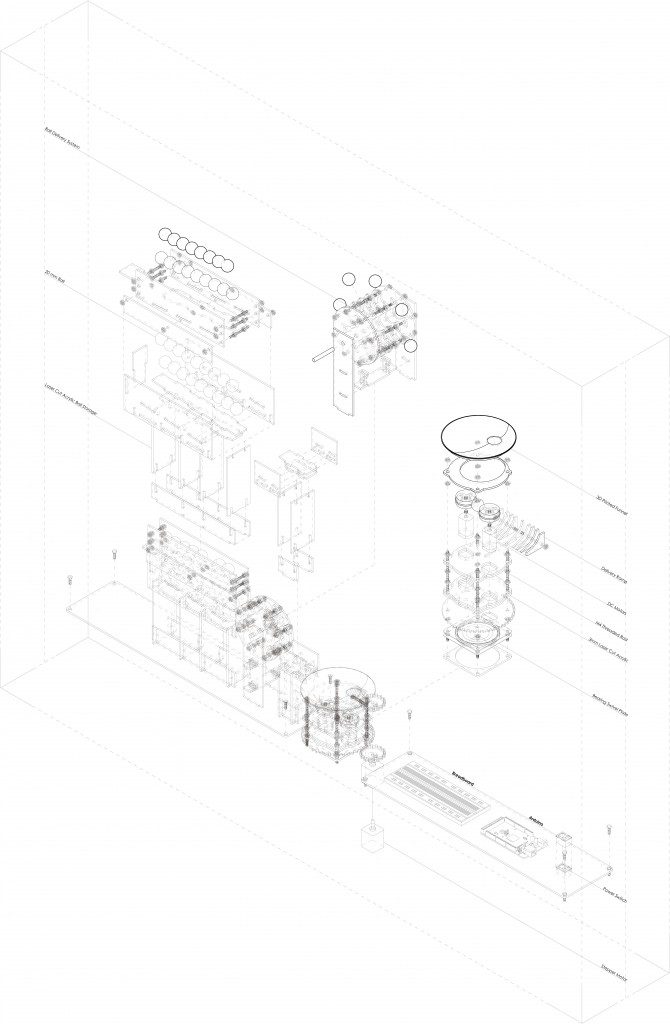
Perpetual Machine
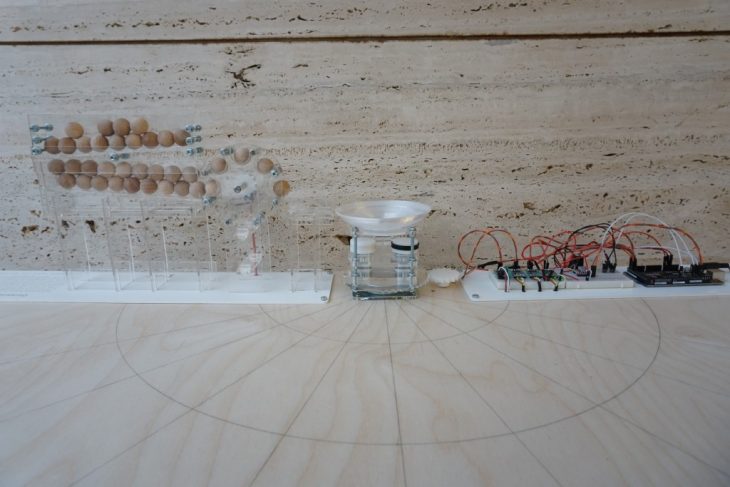
Mechanical Protocol:
- Press power button to turn on machine
- The two DC motors, for the ball shooting mechanism, turn on and run at full speed
- The Servo motor, for ball delivery mechanism, rotates for one second then stops
- This rotation delivers a ball from one ramp to another
- The ball then rolls its way down the delivery ramp and into the ball shooting funnel
- The ball spins around the inside of the funnel until it reaches the opening
- The ball falls through the opening in the funnel and lands on the ramp
- The ramp delivers the ball between the two DC motors
- The ball is then shot at the sand
- The ball hits the sand and disburses the sand
- The load cells then calculates the new weight of the sand
- If a load cell calculates that the sand in an area weighs greater than a set amount, then the device is rotated to aim at the area
- The device then repeats from step 3 to step 13
Architectural Protocol:
- Generative Systems simulates the dramatic weather conditions that cause erosion to occur on a 5000m2 landscape over a period of 50 years. The changes in the terrain occur every season due to its intense weather conditions which cause erosion of the topography. This erosion of the terrain creates natural streams to form in the topography. The society takes use of these streams for the purpose of irrigation, food production and generating electricity. When the streams form the society installs irrigation pumps at every streams ends and intersections. This redirected water it used for the farming and living areas. In order to power these irrigation pumps the society constructs a whirlpool generator every 200 meters along the stream. The Whirlpool generator can produce 15 kw per 1.8m3/s flow of water and is installed next to a stream to redirect the flow of water towards the generator then back to the stream. Due to its ability to produced power the living units are placed within 80 meters from a whirlpool generator. Agricultural farming plots are placed within 500 meters from an irrigation pump and 80 meters from a living unit. To allow for vertical circulation throughout the new topography, steps are placed every 150 meters along the new topography line. This protocol is applied to the sand disbursement through the means of a live grasshopper stream of the board in plan.
Domain:
- Scale 5000m2 x 5000m2
- Period 50 Years
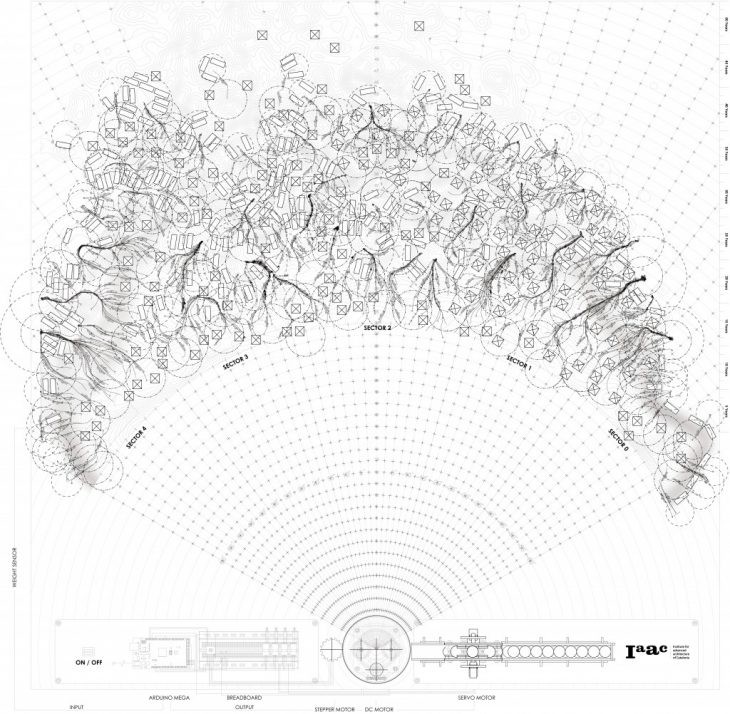
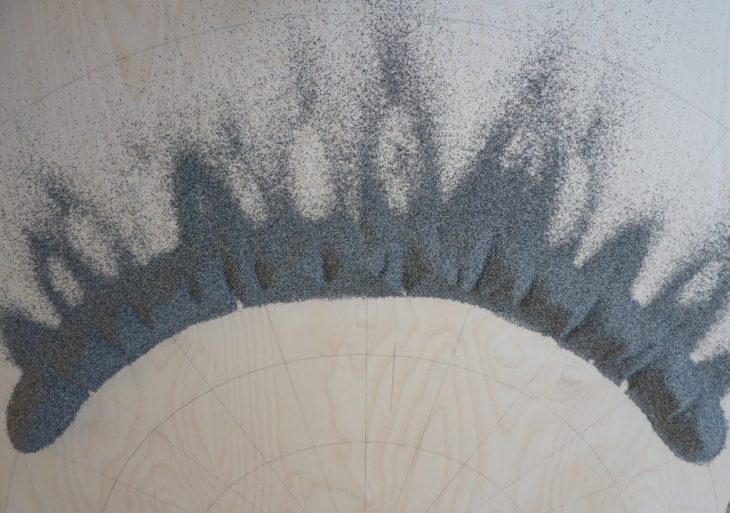
Grasshopper Animation:
- The architectural protocol was implemented into the sand disbursement, caused by the perpetual machine, through the means of grasshopper and firefly. A webcam is placed above the machine in order to track the real time sand displacement. Grasshopper then tracks the disbursement and applies the architectural variables according to the architectural protocol.
Architectural Variables:
- Living Unit – (25m2)
- Whirlpool Generator (Continuous 15KW per 1.8m3/s flow of water)
- Irrigation Pump (coverage 100-500 m2)
- Steps (10 meters long placed every 150 meters)
- Agricultural plots (50 m2)
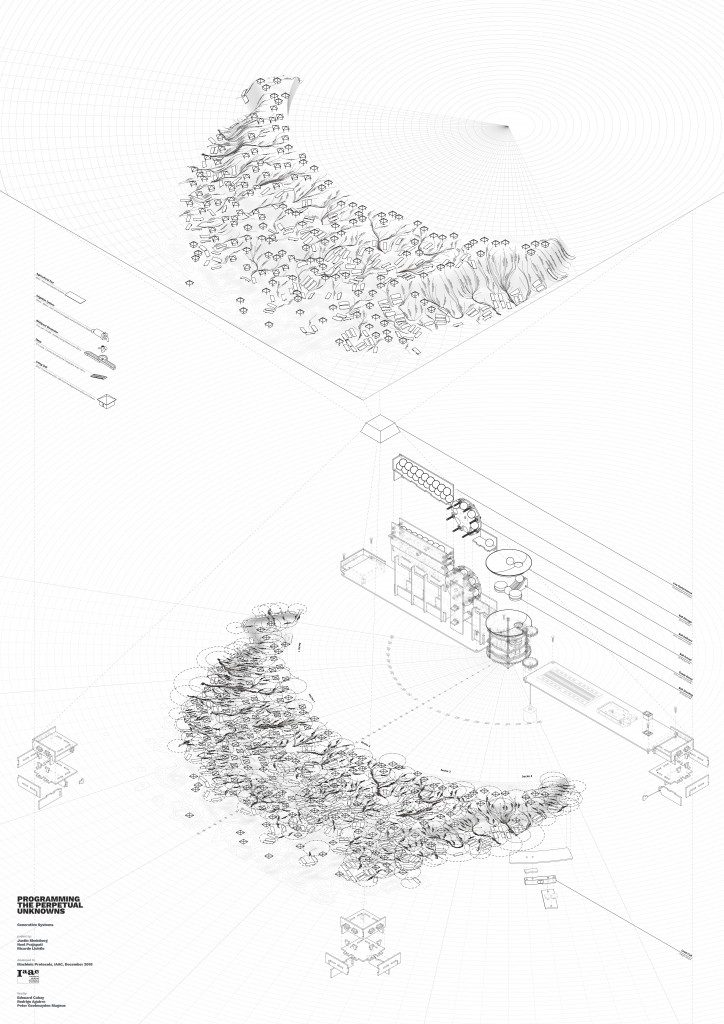
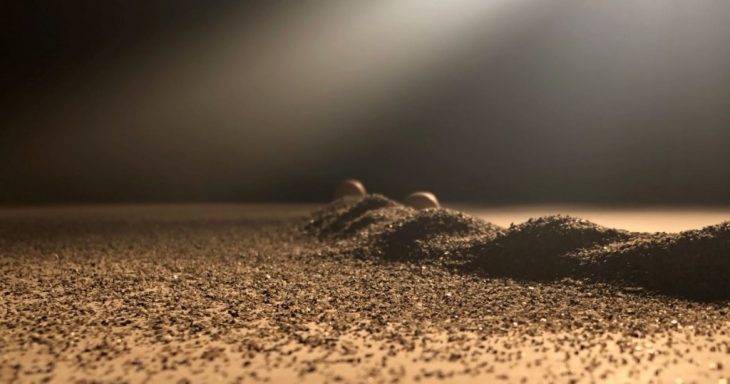
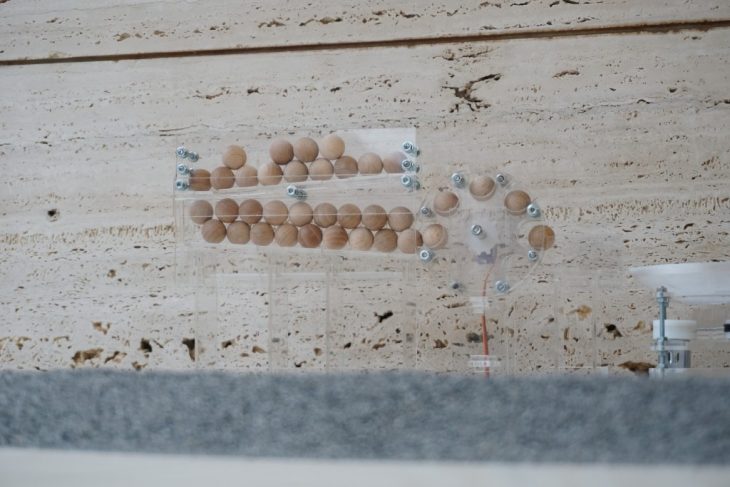 Project by:
Project by:
Justin Sheinberg
Ricardo Lichtle
Neel Prajapati
Developed in:
Mechanic Protocols, IAAC, December 2018
Faculty:
Edouard Cabay
Rodrigo Aguirre
Peter Geetmuyden Magnus